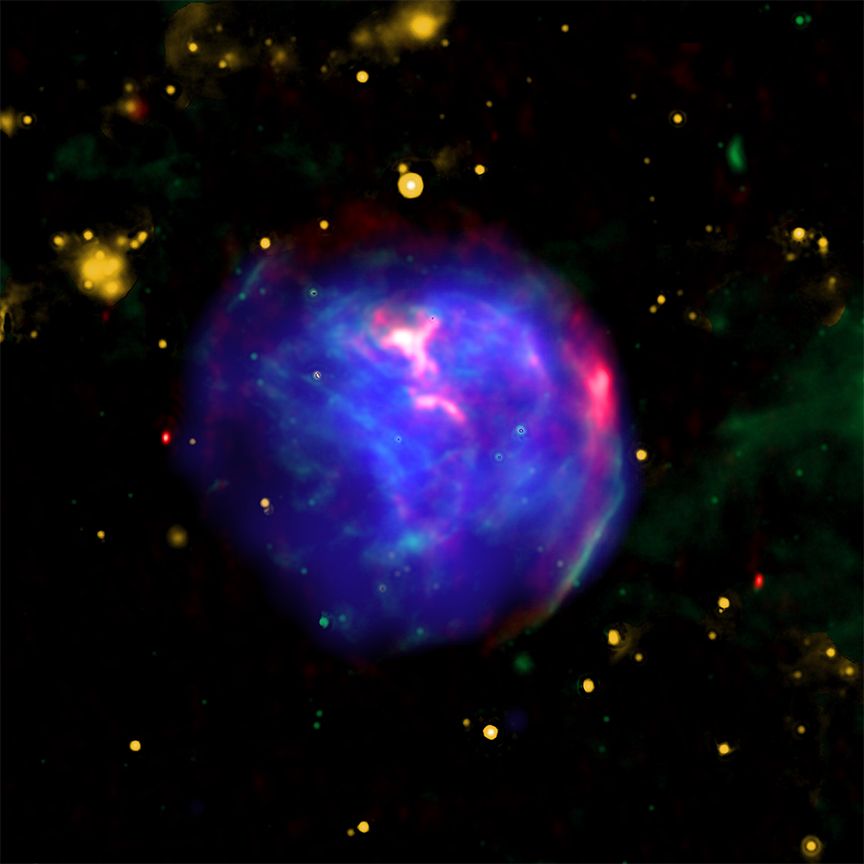
This resistance slows down the debris, creating a reverse shock wave that travels back toward the center of the explosion, heating the surrounding debris in its path, according to the statement. !
"The reverse shock heats the debris to millions of degrees, causing it to glow in X-rays."!
G344.7-0.1 is fairly old compared to other well-known Type Ia supernova remnants, which have exploded in the last thousand years or so and not yet encountered the same reverse shock wave that heats the debris at the remnant's core.Therefore, observations of G344.7-0.1 shed new light on the later evolution stages of Type Ia supernova remnants.
Additionally, the Chandra X-ray data revealed the supernova remnant contains iron near its core, which is surrounded by arc-like structures containing silicon.The data shows that the regions containing iron were more recently heated by the reverse shock wave, supporting Type Ia supernova models that predict heavier elements, like iron, are produced at the center of these stellar explosions, according to the statement
